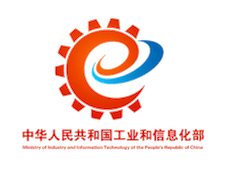 For some registries, it has been a more than four-year process to get their TLDs approved by China’s regulator, the Ministry of Industry and Information Technology (the enigmatic “MIIT”). However, with slow but steady MIIT approvals now coming out of China, what started with the MIIT’s policy revision some years ago, to the appointment of the equally abstruse “review committee” last year, has now resulted in “approved” foreign registries now legally selling their domains in China. While this is certainly good news, the process leading to MIIT approval is still a formidable one.
For some registries, it has been a more than four-year process to get their TLDs approved by China’s regulator, the Ministry of Industry and Information Technology (the enigmatic “MIIT”). However, with slow but steady MIIT approvals now coming out of China, what started with the MIIT’s policy revision some years ago, to the appointment of the equally abstruse “review committee” last year, has now resulted in “approved” foreign registries now legally selling their domains in China. While this is certainly good news, the process leading to MIIT approval is still a formidable one.
As the China-specialist agency which was hired to support the successful applications of .club, .ink, .shop, .site and .vip, the ‘coming soon’ applications of .art, Famous Four, Neustar (.biz & .co), Rightside, and the original China market entry of the Chinese IDNs .在线 and .ä¸æ–‡ç½‘, Allegravita is unambiguously the most experienced China domain registry consultant in the world. Elliot Silver of DomainInvesting.com asked us to write an update on the complicated process of applying for and receiving MIIT approval, so we hope this overview is of interest to the domain name industry.
Selling domains in China to Chinese registrants and investors not only represents clear opportunities for registries in “DUMs and Dollars”, but equally requires the registry to commit substantial time, capital and other resources. The decision to commit to China is all the more daunting because of vast cultural, linguistic, and regulatory unknowns.
Admittedly, China’s is a difficult system for an outsider to navigate for all these factors, and also because China operates in a complex “Chinese knot” woven tightly with red tape. However, as the recent TLD approvals show, the process is not an insurmountable one if you select your China partners carefully, and navigate the process according to a clear roadmap.
Read on to understand the main checkpoints on that roadmap.

“Chinese Knot” by Flickr user Qiaomeng. Creative Commons license.
I want a woofie? What the what is a woofie?
Let’s assume that your registry has already properly scoped the Chinese market, done adequate market research and validated the opportunity for your at least one of your registry’s TLDs. You’ve also appointed qualified services providers and understand the costs and timelines.
The first step for a registry to do business in China is to set up a WFOE. A WFOE (pronounced “woofy”) stands for Wholly Foreign Owned Enterprise. While there are many different types of corporate vehicle in China, and a WFOE is only one of the array of options, the WFOE is the only corporate vehicle accepted by the MIIT. As we have written before, don’t assume you can use a cheap RO (Representative Office), a Hong Kong or Taiwan company, or your wife’s uncle’s Chinese import-export business in Guangzhou — Do not attempt to game China’s regulators. We’ll say it again: as a foreign domain registry, the only type of corporate vehicle acceptable to the MIIT is a WFOE.
Although establishing a WFOE is somewhat spendy, a WFOE is actually the best choice for foreign companies, because it is (by far) the most autonomous option, and this is very important. Unlike Sino-Foreign Joint-Ventures (JV) or Representative Offices (RO), a WFOE allows your foreign company full control over registered capital, human resources, and most importantly, affords good legal protection.
There was a time in the recent past that opening a WFOE was prohibitively expensive because the Administration of Industry and Commerce would determine the amount of “Registered Capital” by industry. For example, Allegravita’s industry, marketing, required full payment of US$250,000 to even begin the process (we had to pay up in this quanta when we first incorporated in China in 2003). Now, the Administration of Industry and Commerce no longer requires full payment of the WFOE’s registered capital for large amounts; better still, it allows the foreign company to determine the amount of registered capital; and, for the red bow on top, gives you up to 10 to 20 years (depending on district of corporate domicile) to make the full registered capital injection into China.
These days, the new WFOE’s risk profile is also substantially reduced over what we “old China hands” had to manage: Let’s say you want to shut your WFOE down before you’ve made the full registered capital payments. No problem. You can do that and you can repatriate your funds as long as your WFOE has been compliant with Chinese law, and tax is paid up. This flexibility was unheard of a decade ago and a clear demonstration of China’s commitment to globalization.
As with many things in China, under that red tape, you find many shades of grey. While it is true that neither the MIIT nor the Administration of Industry and Commerce “requires” a certain amount of registered capital, there absolutely is an expected amount, with clear regulations of what is permitted as a minimum for registered capital. In China, your registered capital amount is public, printed right there on your business documents and this determines to the government, to the bank, to your potential investors, and to your clients how serious you are about doing business in China. You can expect to declare a registered capital amount of at least CNY1,000,000 (approximately US$160,000) to be injected over the next twenty years. It should be noted that the registered capital isn’t meant to sit in your account; it is meant to be used as working capital – to pay your rent, staff, overheads, and tax.
Why do I need a woofie? My registry’s foreign company executes RRAs with Chinese registrars.
One of the questions we are asked most often is why it is even necessary to open a WFOE if all RRAs (Registry-Registrar Agreements) with Chinese registrars are signed with the foreign company, and not the Chinese subsidiary (the WFOE). This is an excellent question with a simple answer. You need to have a properly incorporated WFOE to get your MIIT approval. You don’t need the WFOE to run your registry operations.
 Wonderful. We want a woofie.
Wonderful. We want a woofie.
The WFOE set up is straightforward. You get a series of corporate documents authenticated by the Chinese embassy or consulate in the state/country in which the parent company is domiciled; you submit a packet of documents (all in Chinese) including sworn statements by the company’s nominated “Legal Person” for the WFOE; an acceptable feasibility study; an acceptable local Chinese office lease; and a staffing structure statement to the Administration of Industry and Commerce. These last two items are the ones which relate the most to your MIIT application.
Pay attention. Your local Chinese office is important.
Another grey area in China: office leasing. You must rent a legal office. Not all office leases in China are considered legal. There are conditions of tax zones, building zones, and landlord compliance and registration. Rents in the major Chinese cities rival office rental fees in London and NYC. A good local service provider (such as Allegravita) can help navigate these hurdles and get you into legal and affordable office accommodations.
Having an acceptable local Chinese office is a requirement not just for the WFOE, but for your application to the MIIT. The MIIT has said they will do site visits to ensure registries have a suitable physical presence in China (with a landline), which brings us to the next WFOE/ MIIT crossover: staffing.
Like Soylent Green, your WFOE is made of people.
On your WFOE application, you must designate the Legal Person. The Legal Person swears to uphold the laws of the People’s Republic of China, not engage in any acts of corruption, and accepts full responsibility of the actions of the WFOE. Being a Legal Person is a serious commitment, and the registry must carefully consider this post. Your local consultant can advise best practices and strategies.
The second person representing the WFOE and the parent company is called the Supervisor. This person doesn’t really have a hands-on role in the WFOE but needs to be named. The WFOE also needs a Manager and a Signatory, but these roles can legally be fulfilled by the Legal Person.
We’ll be needing a plus-two, please.
Since you’re asking permission to enter one of China’s most strategically sensitive sectors – the foundation of the internet – the MIIT has its own local staffing expectations. In addition to the Legal Person, the MIIT expects two employees for your registry WFOE. One must be your Technical Contact. This person MUST understand the technical aspects of your registry operations, must speak excellent Mandarin Chinese, must have a Chinese phone number, and must be able to meet with the MIIT when summoned (which is often on somewhat short notice – say a couple of days). The MIIT also wants to see a second local hire in China. This person could be an office manager, or someone hired to handle registrar relations, or even a local marketing manager. Two employees may seem like a lot, but it took a lot of negotiation on the part of our strategic partners, ZDNS/KNET, demonstrate that Allegravita-ZDNS client registries can fulfil all requirements with only two full-time hires (otherwise, the requirement is as high as five employees).
You’re well advised to keep these eventual MIIT requirements in mind as you determine your WFOE staffing structure. Changes to your WFOE Legal Person and Supervisor isn’t difficult, but it is bureaucratic process and enough of a pita that “measure twice, cut once” is advisable.
All names of all personnel will go on your registry’s MIIT application, naturally, and we only work with registries with a sincere and honest commitment to fulfil these requirements correctly.
WFOE application ready! Boom! Uh, when can we say ‘boom’?
The WFOE approval can take as little as two months if the registry can get their corporate documents in order quickly and if you use a China consultant that is reliable, connected and experienced. Some registries have complex enough incorporation and/or legal department policies to extend this time period out to six or more months.
Can I apply for my MIIT approval now?
The moment you get your Business License is the moment you can start your MIIT application. It doesn’t mean your WFOE is 100% set up. That doesn’t happen until your Chinese bank account is set up and that typically requires the Legal Person to go personally to the bank in China to open the account. When the bank account is set up, the registry will make its first registered capital injection (into the Chinese bank account) and it is now the proud owner of a shiny new WFOE (tip: red drives faster). From here on out, there are monthly compliance responsibilities for as long as the WFOE operates in China. Fortunately, the monthly compliance costs and fees are relatively low.
Receiving your WFOE Business License and Organization Code means that you have all the information you need to start your MIIT application. While the process for both the WFOE set-up and MIIT application are regulated, this isn’t something that registries can or should attempt alone. Registries really do need to partner with service providers who understand the process because for every pre- and post-application query, you’ll need trusted partners advocating on your behalf.
The MIIT application is detailed. It asks for a short-term and mid-term business plan, including projected revenues and costs. It asks for staffing justifications. It asks detailed questions about the technical operations of the registry, the technical architecture and network information security. In addition, you’ll need to submit a standard legal Chinese translation of your RRA. It goes without saying that the complete MIIT application is entirely in Chinese.
B2G
Once applications are submitted to MIIT, they are reviewed, and as part of the review process, the MIIT will call a meeting with the registry.
This is the first of potentially several “site” visits though location of the meeting is ultimately determined by the MIIT. The meeting may include technical questions and questions on relevant technical solutions, safeguard solutions, and internet and information security. Expected to be present is the Mandarin-speaking technical contact designated by the registry/WFOE.
It is, in our experience, good form for the WFOE’s Legal Person to also be in attendance. In China, personal meetings achieve trust. This is why designating that Legal Person appropriately is key. Your Legal Person should be wholly invested in your registry, must fully understand the registry’s objectives, and should hold a senior enough (if not the most senior) position in the registry to respectfully match the rank of the MIIT officials calling the meetings.
When we prepare our own clients for these initial meetings, we send them armed with a bound dossier of all their China approvals, legal activities, hundreds of Chinese press clippings generated by our PR unit, and descriptions of any and all activities to show not just transparency of the registry’s activities in China, but also to show respect for the compliance process in China.
The most important partner you will have in China is who you select to handle the registry’s technical backend service. This partner, such as the market leader ZNDS/KNET, will not only be the one submitting the MIIT application on your behalf, but fulfils China’s legal requirement that all registries adhere to real name verification, local data escrow, and other regulatory requirements Allegravita has written on multiple times over the last four years:
- China Mainland Registry Operator License Application Service
- Registry Technical Backend Service
- Real Name Verification Service
- DNS
- China Data Escrow
Of course, the brief description above raises many specific questions about costs, compliance, employment contracts, and myriad other issues, but hopefully our overview unboxes to some degree what to expect for the MIIT approval process.
Allegravita is an award-winning, multi-disciplinary public relations and strategic communications agency focused on the China region. Established in 2003, Allegravita has assisted over 270 companies and over 15 registries to successfully enter the Chinese market. Of the six new gTLD registries to have received MIIT approval (at the time of writing, March 2017) all but one were Allegravita clients.



Thank you for writing this and sharing this extensive information. I had read about registries receiving their MIIT approvals, but I had no idea what goes into the approval process.
Elliot, it was our honour to be asked by you to write a few notes on the China approval process. At Allegravita, it is always a team effort, and as titular author I’m standing on the shoulders of our expert team in China and the US.
Any questions, anyone? China business has been our singular focus for >14 years. AMA!
F*** China…’tis a nation of nothing more than Scammers, Strongmen, and Slaves.
It is shameful to see so many American businesses continue to support this oppressive and reprehensible regime.
@STRIKER,
There are 1,357,000,000 people living in China. It’s beyond insane to say that they’re “nothing more than scammers, strongmen, and slaves.” Even if you disapprove of the regime, it’s just a wee bit intolerant to say “F*** China” … or “F***” any group of 1,357,000,000 people, sight unseen.
Beam first, then mote. America has plenty of scams, coercion, and servility at home at the moment.
Interesting read.
I own some .cn domain names that match my .com names, to earn trust from Chinese people.
I was surprised how cheap and easy it was to buy .cn names.